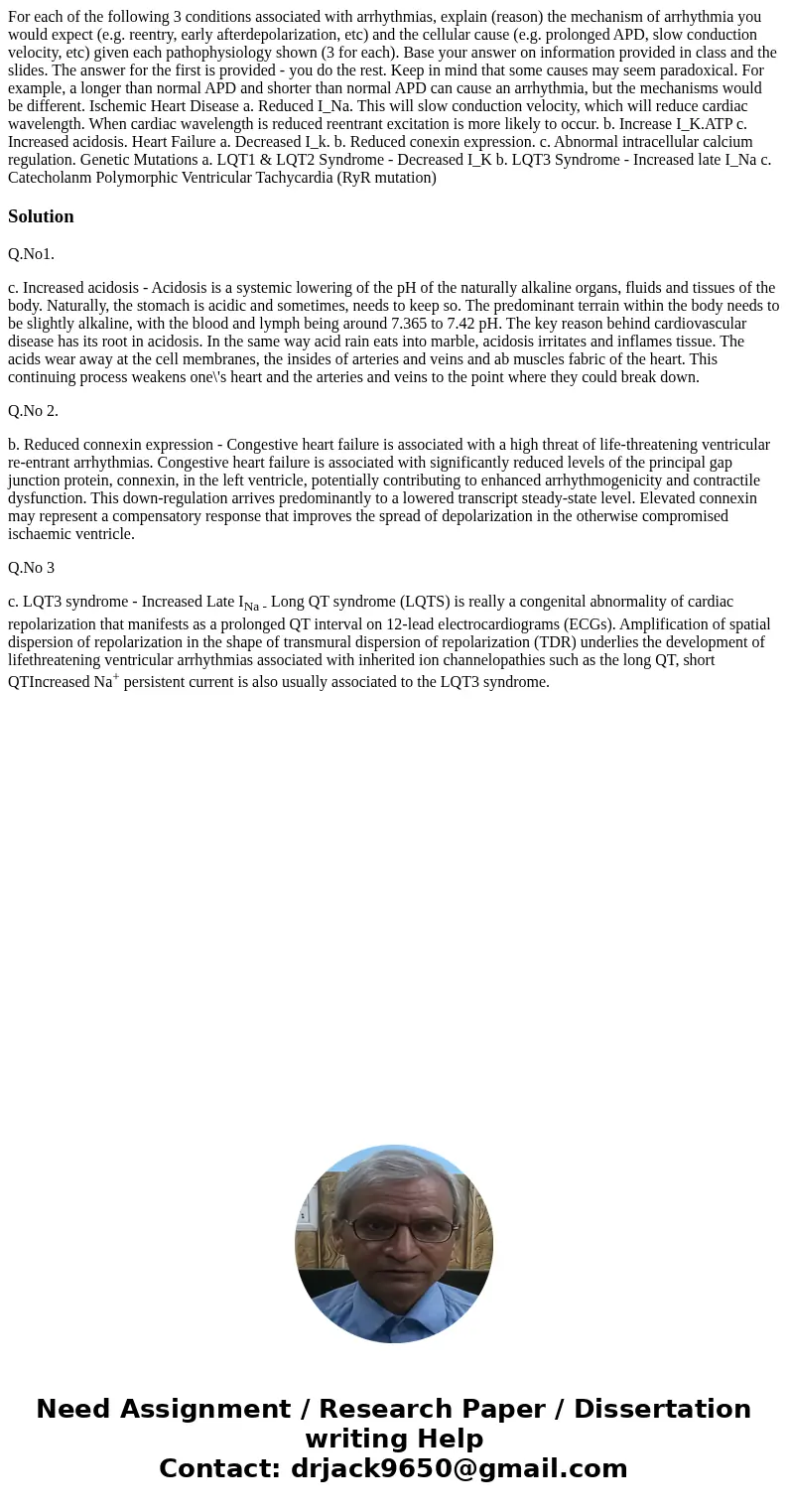For each of the following 3 conditions associated with arrhy
Solution
Q.No1.
c. Increased acidosis - Acidosis is a systemic lowering of the pH of the naturally alkaline organs, fluids and tissues of the body. Naturally, the stomach is acidic and sometimes, needs to keep so. The predominant terrain within the body needs to be slightly alkaline, with the blood and lymph being around 7.365 to 7.42 pH. The key reason behind cardiovascular disease has its root in acidosis. In the same way acid rain eats into marble, acidosis irritates and inflames tissue. The acids wear away at the cell membranes, the insides of arteries and veins and ab muscles fabric of the heart. This continuing process weakens one\'s heart and the arteries and veins to the point where they could break down.
Q.No 2.
b. Reduced connexin expression - Congestive heart failure is associated with a high threat of life-threatening ventricular re-entrant arrhythmias. Congestive heart failure is associated with significantly reduced levels of the principal gap junction protein, connexin, in the left ventricle, potentially contributing to enhanced arrhythmogenicity and contractile dysfunction. This down-regulation arrives predominantly to a lowered transcript steady-state level. Elevated connexin may represent a compensatory response that improves the spread of depolarization in the otherwise compromised ischaemic ventricle.
Q.No 3
c. LQT3 syndrome - Increased Late INa - Long QT syndrome (LQTS) is really a congenital abnormality of cardiac repolarization that manifests as a prolonged QT interval on 12-lead electrocardiograms (ECGs). Amplification of spatial dispersion of repolarization in the shape of transmural dispersion of repolarization (TDR) underlies the development of lifethreatening ventricular arrhythmias associated with inherited ion channelopathies such as the long QT, short QTIncreased Na+ persistent current is also usually associated to the LQT3 syndrome.

 Homework Sourse
Homework Sourse